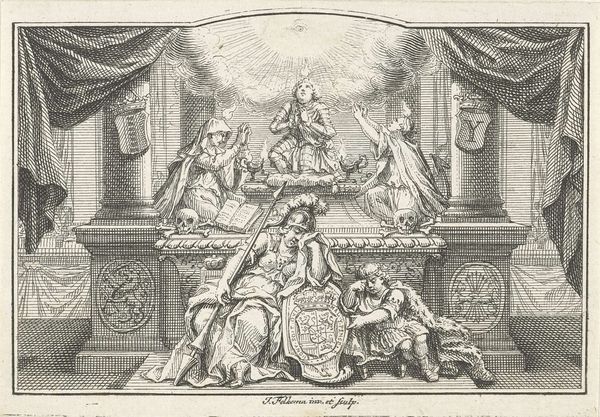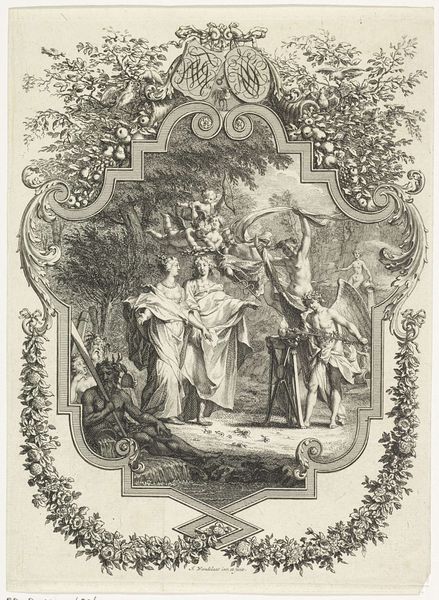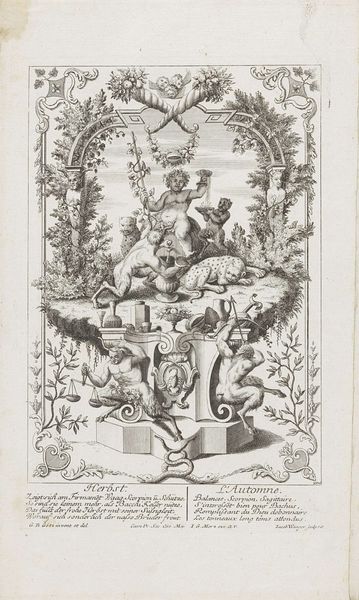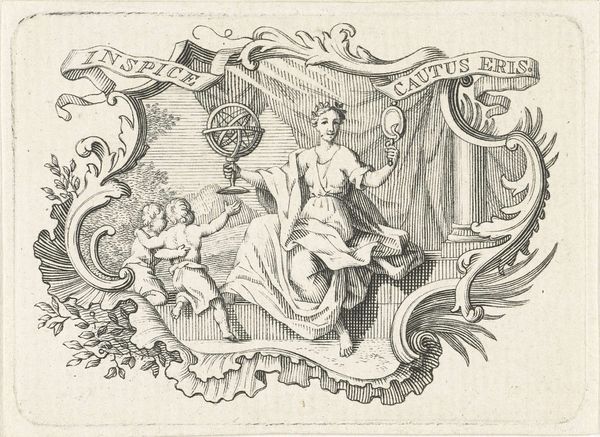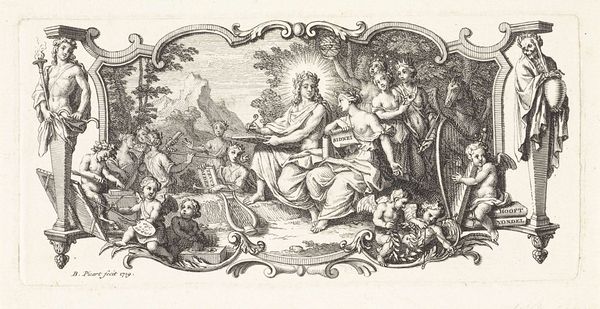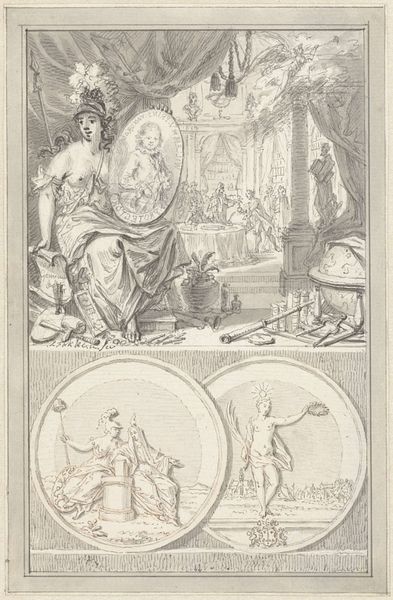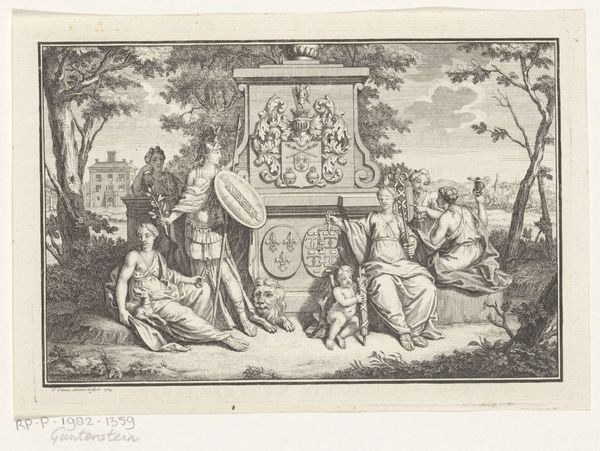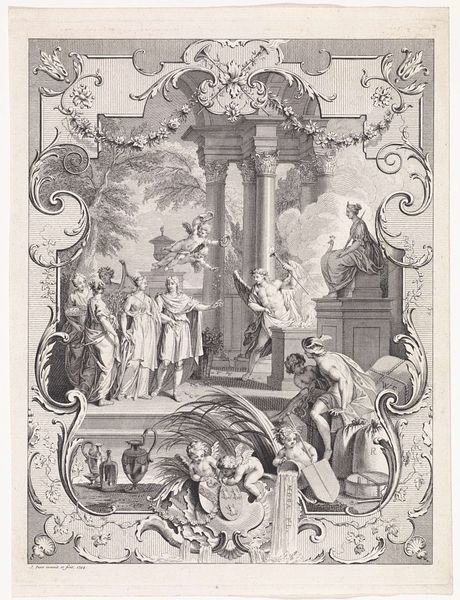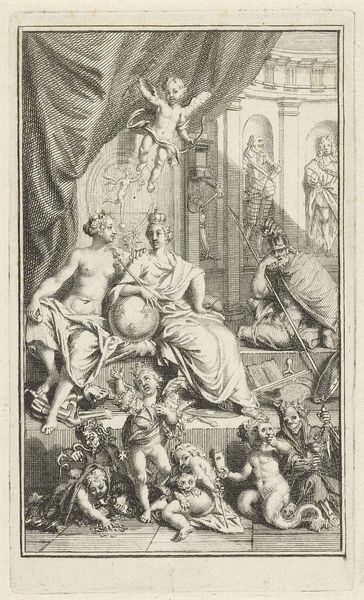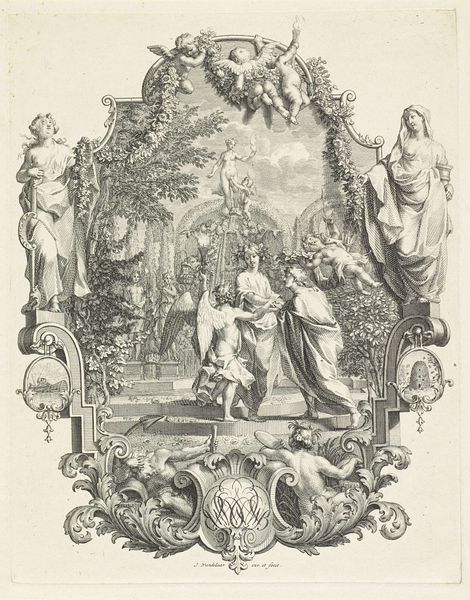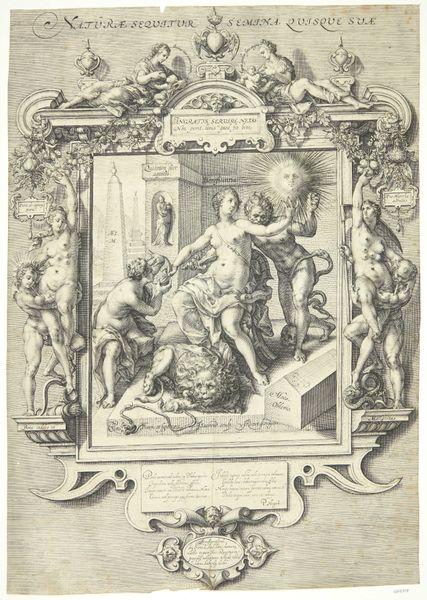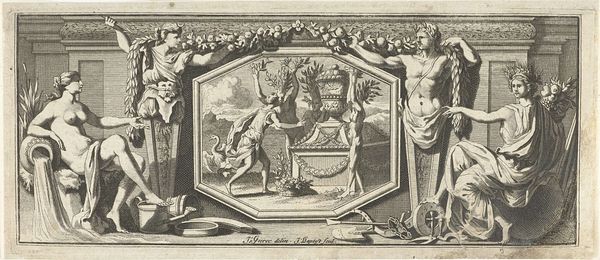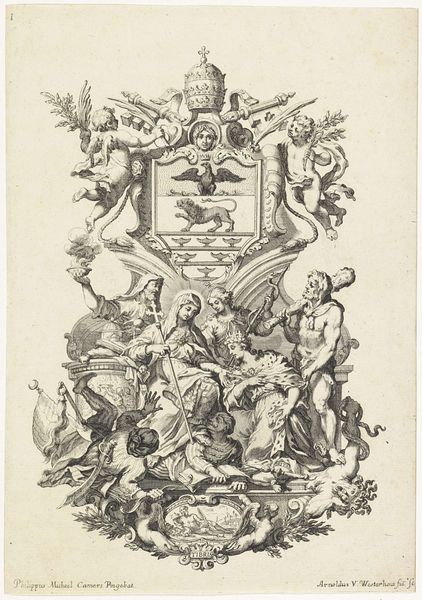
drawing, pencil, engraving
#
drawing
#
allegory
#
baroque
#
pencil
#
engraving
Dimensions: height 98 mm, width 144 mm
Copyright: Rijks Museum: Open Domain
Curator: Look closely at this pencil drawing and engraving. The Rijksmuseum holds this, entitled "Verheerlijking van het wapen van prins Willem IV," created in 1751 by Simon Fokke. Editor: The immediate impression is one of ephemeral celebration; it's a grand yet delicate image rendered in muted greys, like a fleeting memory caught in time. Curator: Indeed. The work situates itself within the political climate of the Dutch Republic in the mid-18th century, when William IV became hereditary stadtholder. What we see here is not merely a coat of arms, but a visualization of power and succession amid larger societal transitions. The drawing style recalls Baroque, while suggesting changing social and political dynamics, a subtle reflection of shifting power structures. Editor: Note the presence of classical allegorical figures surrounding the coat of arms. The eye motif at the top radiates power while symbolizing divine right, an age-old assertion of legitimate authority that finds its roots far back. Angels, or putti, often speak to something holy, reinforcing a feeling of celebration with religious conviction. The mourning figure in the background is intriguing, potentially representing the losses that have come along the path to power or as a more specific memento mori? Curator: That's astute. Consider that these weren’t created in a vacuum. The placement of this dynastic image within a nexus of historical change prompts questions about the ethics of hereditary power versus that of elected authority and societal well being. The role and image of hereditary rule have been intensely debated. Editor: Precisely, those artistic emblems served more than mere decorative purposes, operating as cultural anchors in times of immense socio-political shift. Here is more than the visual proclamation of strength. There are layers representing an ever complex situation within cultural, ethical and temporal spheres. Curator: Exploring how representations of authority—like the symbolism present here—interplay with notions of justice, privilege, and the will of the people makes this work still so resonant today. Editor: Yes, a brief journey through visual history that inspires consideration and interpretation from the past.
Comments
No comments
Be the first to comment and join the conversation on the ultimate creative platform.

